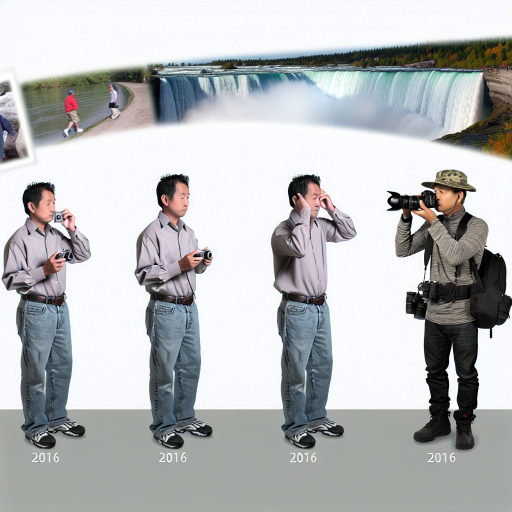Overview of Digital Content Creation in Canada
Digital content creation flourishes in Canada.
Numerous creators focus on various formats, including video, writing, and design.
This dynamic industry supports artistic expression and economic growth.
Growing Demand for Digital Content
Consumers crave diverse digital content across multiple platforms.
Social media and streaming services drive this increasing demand.
As a result, content creators have new opportunities to engage audiences.
Supportive Ecosystem for Creators
Canada offers a robust ecosystem for digital creators.
Government programs and grants help foster talent and innovation.
Organizations like Creative BC and Telefilm Canada provide valuable resources.
Diverse Creative Communities
Canada’s cultural diversity enriches the digital content landscape.
Creators from various backgrounds contribute unique perspectives.
In turn, this variety enhances the richness of Canadian storytelling.
Challenges Facing Content Creators
Despite significant growth, creators encounter several challenges.
Navigating copyright laws can be complex and confusing.
Moreover, monetization remains a critical concern for many creators.
Finding sustainable income models is essential for long-term success.
Essential Hardware for Content Creators
Laptops
A reliable laptop is crucial for content creators.
Look for one with a fast processor and ample RAM.
Consider models like the MacBook Pro or Dell XPS series.
These options provide excellent performance for editing and multitasking.
Ensure the laptop has a high-resolution display for accurate color representation.
Battery life also matters, especially during travel or outdoor shoots.
Cameras
High-quality video requires a good camera.
DSLRs and mirrorless cameras are popular choices among creators.
Models like the Canon EOS R or Sony A7 series offer great features.
Unlock Your Career Potential
Visualize a clear path to success with our tailored Career Consulting service. Personalized insights in just 1-3 days.
Get StartedThese cameras perform well in various lighting conditions.
Investing in a decent lens will improve your shot quality significantly.
Additionally, consider adding a tripod for stability during shoots.
Microphones
Audio quality can make or break your content.
A good microphone enhances the listening experience for viewers.
USB microphones, such as the Blue Yeti, are user-friendly and effective.
For on-the-go recording, consider a lavalier microphone.
These clip onto clothing and deliver clear audio without obstruction.
Always test your microphone before starting a session to ensure it works properly.
Software Tools for Video Editing
Popular Video Editing Software
Video editing is crucial for content creators.
Many software options cater to different needs.
Adobe Premiere Pro stands out for its features.
It offers advanced editing capabilities and integrations.
Final Cut Pro is a favorite among Mac users.
Its user-friendly interface suits various skill levels.
DaVinci Resolve excels in color grading and editing.
This software also offers a free version with great features.
Filmora is perfect for beginners due to its intuitive design.
It includes numerous effects and templates to enhance videos.
Key Features to Consider
When choosing video editing software, consider several features.
First, assess the ease of use for beginners.
Next, ensure the software supports various file formats.
Look for features like multi-camera editing options.
Additionally, check for built-in effects and sound editing tools.
Cloud storage integration can streamline the editing process.
Regular updates and customer support also improve the experience.
Comparing Price Options
Price varies significantly among video editing software.
Some tools, like Adobe Premiere Pro, require a subscription.
Others, like Final Cut Pro, offer a one-time purchase.
Free options like DaVinci Resolve provide excellent functionality.
Evaluate your budget and long-term needs when selecting software.
Always consider any additional costs for plugins or updates.
You Might Also Like: Exploring Income Streams for Canadian Content Creators
Graphic Design Software: Best Tools for Visual Content
Importance of Graphic Design Software
Graphic design software is essential for digital content creators.
It enables creators to produce visually appealing content quickly.
Such tools streamline the design process and enhance creativity.
Popular Graphic Design Tools
- Adobe Illustrator
- Canva
- CorelDRAW
- Affinity Designer
- Sketch
Adobe Illustrator
Adobe Illustrator is a leading vector graphic design tool.
It offers a robust set of features for professional designers.
Additionally, it supports various file formats for versatility.
Canva
Canva is user-friendly and perfect for beginners.
It provides templates for a variety of design projects.
Moreover, it allows for collaborative work in real-time.
CorelDRAW
CorelDRAW excels in vector illustration and layout design.
It offers powerful tools for precise control over designs.
Also, it includes features like photo editing and typography.
Affinity Designer
Affinity Designer is a cost-effective alternative to Illustrator.
It combines vector and raster graphics seamlessly.
This makes it ideal for multi-faceted design projects.
Sketch
Sketch is a favorite among web and app designers.
It offers easy-to-use vector editing tools.
Furthermore, it enhances collaboration with shared libraries.
Choosing the Right Tool
Selecting the right graphic design software depends on your needs.
Consider your skill level and the type of projects you undertake.
Ultimately, the best tool enhances your creativity and workflow.
Find Out More: Building a Loyal Community as a Digital Content Creator
Social Media Management Tools
Importance of Scheduling
Scheduling posts saves time for content creators.
It allows for consistent content delivery across platforms.
Moreover, scheduled posts can target audience engagement effectively.
Tools like Hootsuite and Buffer excel in this area.
Analytics for Growth
Analytics tools help track performance metrics.
Insights into audience behavior guide content strategy.
Platforms like Sprout Social provide detailed reports on engagement.
This data is invaluable for future content creation.
Popular Scheduling Tools
- Hootsuite: Best for overall management.
- Buffer: Excellent for scheduling and simplicity.
- Later: Ideal for visual content planning.
Analyzing Engagement
Tracking likes, shares, and comments is crucial.
This information reveals what resonates with the audience.
Tools like Google Analytics provide comprehensive insights.
Integrating Tools for Efficiency
Integrating different tools streamlines content management.
For instance, using Zapier can link scheduling and analytics tools.
This integration minimizes manual data collection.
As a result, creators can focus more on content development.
Adapting to Trends
Social media trends change rapidly.
Utilizing analytics helps creators adapt swiftly.
Responding to these trends can boost visibility and engagement.
Always staying informed is key to success in digital content creation.
See Related Content: Navigating Legal Considerations for Digital Content Creators

Content Planning and Collaboration Tools for Teams
Importance of Content Planning
Effective content planning streamlines the creation process.
It ensures that teams stay on target and meet deadlines.
Additionally, it helps in maintaining content quality and relevance.
Top Planning Tools
Several powerful tools assist teams in planning their content.
Trello is a visual project management tool that simplifies task organization.
Asana offers robust features for task assignments and deadline tracking.
Monday.com provides customizable workflows for diverse team needs.
Moreover, Notion serves as an all-in-one workspace for documentation and planning.
Collaboration Essentials
Effective collaboration enhances team productivity and creativity.
Communication tools like Slack facilitate real-time discussions.
Zoom enables face-to-face meetings, even remotely.
Google Workspace offers collaborative document editing and cloud storage.
Strategizing Content Development
Regular brainstorming sessions help in generating innovative ideas.
Utilizing mind mapping techniques can effectively organize thoughts.
Then, creating an editorial calendar provides a clear publishing schedule.
This helps maintain a consistent flow of content across platforms.
Tracking Progress and Feedback
Monitoring progress is vital for successful content execution.
Tools like HubSpot offer analytical insights on content performance.
Collecting feedback using SurveyMonkey enhances content quality.
Regularly reviewing analytics helps refine future content strategies.
Explore Further: Becoming a Set Designer in Canada’s Film Industry: Skills and Pathways
SEO Tools for Digital Content
Importance of SEO Tools
SEO tools play a crucial role in digital content creation.
They help improve visibility and drive organic traffic to your content.
Moreover, these tools provide valuable insights into audience behavior.
Tracking keyword performance is essential for content optimization.
Ultimately, effective SEO increases engagement and conversions.
Recommended SEO Tools
Several tools can significantly enhance your SEO efforts.
- Google Analytics offers in-depth insights into website performance.
- SEMrush allows for comprehensive keyword research and competitor analysis.
- Ahrefs is excellent for backlink analysis and site audits.
- Yoast SEO helps optimize on-page elements effectively.
- Moz Pro delivers robust tracking for SERP rankings.
Choosing the Right Tool
Selecting the right SEO tool depends on your specific needs.
Consider your budget and the features that best suit your content strategy.
Additionally, evaluate the learning curve associated with different tools.
Ultimately, the goal is to find a tool that enhances your productivity.
Always stay updated on the latest features and trends in SEO tools.
Legal Considerations
Copyright Basics
Copyright protects original works such as texts, images, and videos.
In Canada, copyright automatically applies when a work is created.
Creators must understand the duration of copyright protection.
Typically, copyright lasts for the creator’s lifetime plus 70 years.
Importantly, registration is not mandatory but can bolster claims.
Licensing Options
Licensing allows creators to grant permission for others to use their work.
Different licensing types include exclusive and non-exclusive licenses.
Understanding Creative Commons licenses can also be beneficial.
These licenses allow flexibility in how works are shared and used.
Creators can choose the level of protection and sharing they want.
Fair Dealing in Canada
Fair dealing is a critical aspect of Canadian copyright law.
This provision allows limited use of copyrighted material without permission.
Common uses include research, private study, and criticism.
However, fair dealing has specific requirements and tests.
It is important to assess whether your use qualifies for fair dealing.
Consequences of Infringement
Copyright infringement can lead to serious consequences.
Creators may face legal action, including damages and injunctions.
Understanding copyright infringement is key to protecting your work.
Educating oneself about copyright laws minimizes infringement risks.
Resources for Creators
Numerous resources are available to help creators navigate copyright issues.
The Copyright Board of Canada provides valuable information.
Organizations like Access Copyright offer guidance and support.
Consulting with legal professionals can also clarify specific situations.
Staying informed about copyright trends can further protect your rights.




